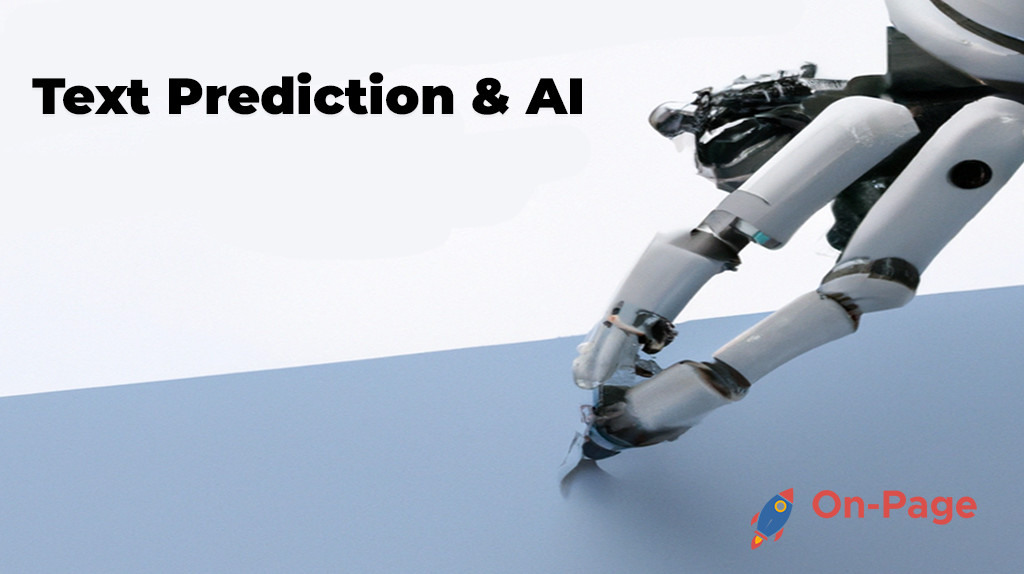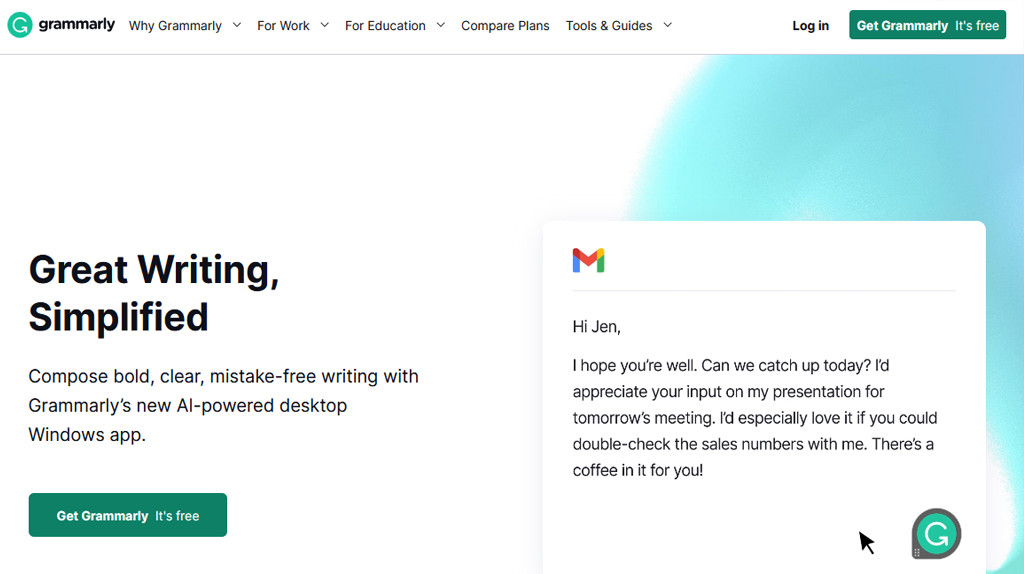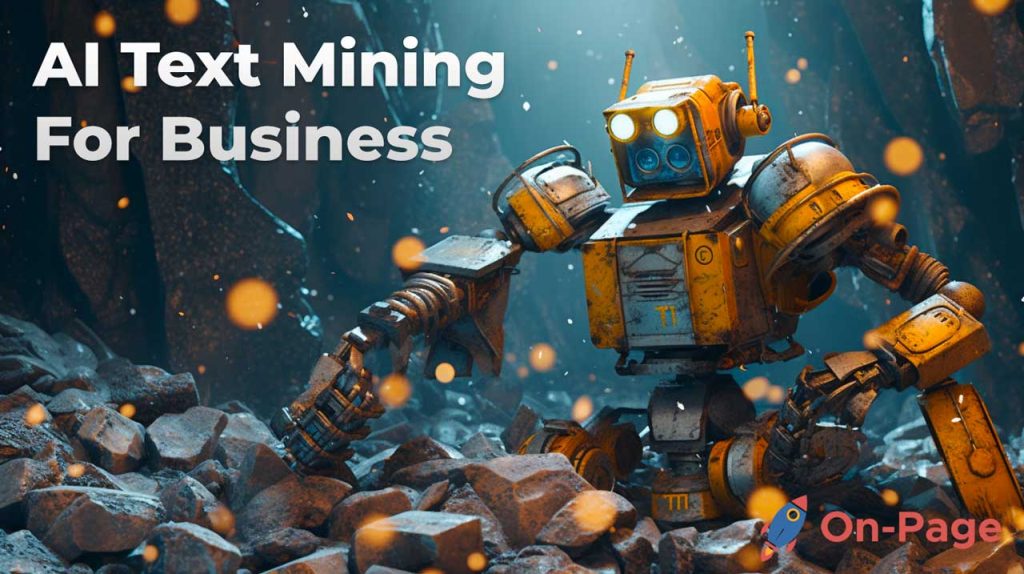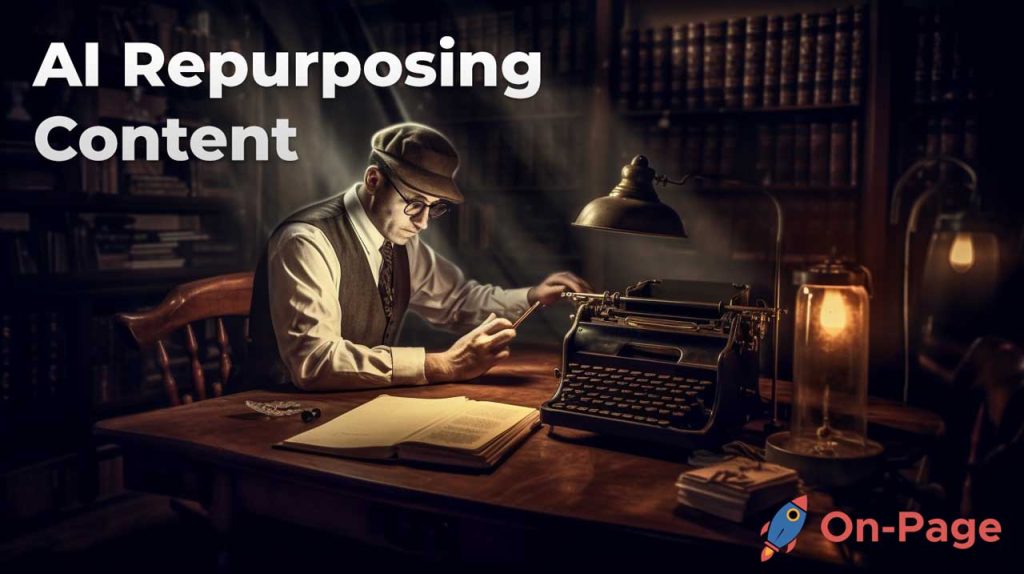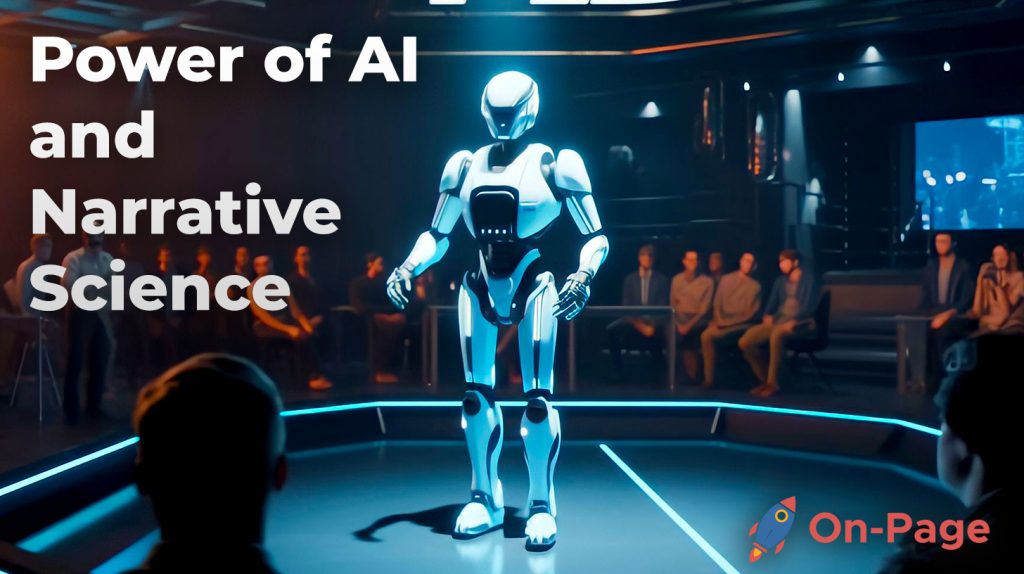Imagine typing just a few characters and watching as an entire, well-crafted sentence appears on your screen, as if by magic. This isn’t science fiction; it’s the power of Text Prediction AI. Unlock your writing potential and transform your creative process with the best SEO optimization tool of the decade. Wave goodbye to writer’s block and reach new heights in content creation with this technological marvel at your fingertips. Dive into our blog post to discover how this game-changer will revolutionize not only your writing, but also boost your search engine rankings.
Text Prediction AI, also known as language modelling AI, uses machine learning algorithms to predict the next word or phrase of text based on previous input. This technology can be used in a variety of industries to improve efficiency, generate content, and enhance the customer experience. Examples include predictive typing on smartphones, chatbots, and generating product descriptions for e-commerce sites. As with any AI technology, it is important to consider ethical implications and ensure the appropriate use of data and privacy protections.
Text Prediction AI in Action
Text prediction AI, also known as autocompletion or word suggestion technology, is the latest trend in the field of Natural Language Processing (NLP) that has been solving decades-old problems for writers, content creators, and businesses worldwide. By predicting the user’s next word or phrase based on their existing text input, text prediction AI boosts writing speed, accuracy, and precision by reducing typographical errors.
Text prediction AI software analyses billions of words to improve its predictive accuracy and suggest better completions over time. For instance, Google uses text prediction AI across all its products such as Gmail, Google Docs, and Gboard. When you start typing an email or a search query, Google suggests specific words and phrases based on their relevance to your previous search queries. Similarly, Microsoft’s text prediction software can help you write emails faster and more accurately.
There are several other applications of text prediction AI that have become popular in recent years. For example, Grammarly uses machine learning algorithms to help people improve their writing style by suggesting grammar corrections, sentence structure changes and vocabulary enhancements. The success of Grammarly proves that there is a growing demand for accurate writing tools that can help users create polished and professional-looking content.
A journalist working on a tight deadline can benefit from using text prediction AI tools to write faster and deliver high-quality content quickly. Anecdotal evidence shows that using text prediction tools has helped journalists make fewer errors in their articles while meeting their tight deadlines.
Another critical application of text prediction AI is language translation services. In the past, translating a document from one language to another was a cumbersome task that required hours of tedious work from human translators. However, with recent advances in NLP technologies like text prediction AI coupled with Machine Learning algorithms, it has become much easier to translate documents with exceptional accuracy.
Moreover, businesses can use text prediction AI for customer service applications to improve their response times for emails and chatbot interactions. Text prediction AI can also be used in chatbots that serve as virtual assistants or customer service representatives, thus enhancing the user’s experience by providing quick and accurate responses.
Understanding Word Prediction Mechanisms
The process of suggesting the next word a user will type is not straightforward and relies on several mechanisms such as natural language processing, statistical inference, and machine learning algorithms.
Natural Language Processing (NLP) is an essential component of text prediction AI. It involves analyzing human languages from a computational perspective to understand their meaning. NLP tools enable computers to understand human language grammar, syntax, and structure.
Statistical inference techniques are used to predict the next possible word a user may type based on the previous words entered in the document or sentence. Depending on the application context, various statistical models such as Markov models or neural networks can be used to improve the accuracy of predictions.
Machine learning algorithms help predict text more accurately over time through continuous learning from each user’s behavior and history. The more data algorithms have access to, the more precise they become with each prediction.
While text prediction AI has many advantages, some critics argue that it poses ethical concerns regarding privacy breaches. As software developers collect massive amounts of data from users, there are fears that it may be misused, leading to further breaches in privacy and security. Developers must implement strict policies about data collection and use so that users can trust these systems.
To better understand how text prediction AI works imagine a music streaming app that uses previous behavior data (like listening habits), genre selection, etc., to suggest new tracks for you every week automatically. Similarly, text prediction software analyses previous user input (their choice of words, writing style) to suggest better sentence construction and faster completion of documents.
- In a study conducted in 2021, researchers found that up to 60% of sample text generated by the GPT-3 model—a prominent language model for text prediction AI—was considered coherent and contextually relevant.
- According to a report published in August 2020, businesses that implement Text Prediction AI have experienced an average increase of 25% in productivity while drafting emails, social media posts, and other content.
- A market research study predicted that the global NLP (Natural Language Processing), which includes text prediction AI, is expected to grow at a CAGR (Compound Annual Growth Rate) of 21.6% between 2020 and 2025, resulting in an estimated market value of around $28.6 billion by 2025.
Common AI Models and Technologies
Artificial intelligence (AI) is powering most of today’s technological advancements, and text prediction AI has come a long way. The technology behind this process involves a combination of computational linguistics, machine learning algorithms, natural language processing (NLP), and computer vision. There are different approaches to implementing text prediction AI, but the most common AI models and technologies include:
N-gram Model: This statistical language model predicts the next word based on the probability of occurrence of a sequence of n words that precede it. For instance, in a sentence that reads “The oil spill caused by the _______” an n-gram model with n=2 might predict the missing word as “ship” if that was one of the previous words. While the n-gram model can result in reasonable predictions for simple sentences, it’s not suitable for more complex ones.
Language Model: A language model is trained on vast amounts of authentic text data to learn the relationships between words, phrases, and other grammatical structures. This model processes various inputs to generate new responses or meaningful sequences based on its knowledge base. The quality of output depends on the quality and quantity of training data used. For instance, Google uses Language Models for their search engines.
Recurrent Neural Networks (RNNs): RNNs use sequential inputs to generate desired outputs while maintaining a temporal context. The output generated covers not only one input but also past inputs that are necessary for generating an accurate prediction. They enable informed decisions by providing patterns within larger datasets. Its applications can vary from identifying spam emails to creating image captions.
Transformative Based Language Models (TBLMs): TBLMs utilize neural-based networks to train large deep learning models with massive quantities of data sets. TBLM utilizes attention mechanisms to evaluate relationships between text inputs. They generally provide more accurate and context-oriented predictions than other models.
Text prediction AI is like a sous chef in the kitchen. A human may be the head chef with the recipe, but much of the food prep will be done by the sous chef. This allows for accuracy, efficiency, and speed compared to those that lack that extra help.
Now that we have some insight into common AI models and technologies, let’s explore the advantages text prediction AI can offer.
Advantages of Text Prediction AI
Text prediction AI has several advantages for both individuals and businesses. Let’s take a look at some of those advantages:
Enhanced Writing Accuracy: One of the most significant benefits of text prediction AI is its ability to enhance writing accuracy. The algorithms used by these tools scan input text and make suggestions for words based on previous input. They can identify spelling mistakes or grammar errors while actively suggesting corrections to make writing coherent and seamless. This saves time spent on editing and increases the accuracy of written communication.
Content Generation Efficiency: Another advantage of using text prediction AI is content generation efficiency. These tools can create large amounts of high-quality content quickly, making it useful for marketing campaigns, academic papers or business reports. The feat becomes possible because these tools are not only efficient at identifying problems in syntax and grammar but also suggest suitable alternatives based on context.
Concerns Regarding Bias: Text prediction AI needs data sets to train on, which means they can suffer from certain biases such as gender or racial biases if not appropriately balanced in their training data sets’ makeup. This often results in outputs that perpetuate these biases in writing rather than eliminating them; therefore, ensuring training datasets are fair and unbiased is critical.
Increased Productivity: By reducing time spent on repetitive tasks such as editing and proofreading, text prediction AI can increase productivity. Workers can save time, redirecting their energy onto more creative tasks such as idea generation or strategy development that further productivity.
Text prediction AI is like a personal language concierge. The service helps anticipate the right word at the right moment, allowing for ease of expression and freeing up mental bandwidth to focus on other essential tasks.
Now that we’ve looked into some benefits offered by text prediction AI, let’s examine how it can be used in real-life scenarios.
- Text prediction AI can enhance writing accuracy, increase content generation efficiency, and boost productivity by reducing time spent on repetitive tasks. However, concerns regarding bias must be addressed to ensure unbiased outputs. Overall, text prediction AI serves as a personal language concierge, allowing for ease of expression and freeing up mental bandwidth for other essential tasks. It has several advantages for individuals and businesses in real-life scenarios.
Enhanced Writing Accuracy
Text prediction AI has been a game changer for writers across the globe. One of its biggest advantages is its ability to enhance writing accuracy. In many industries, there is a high demand for accurate and error-free writing, whether it be for business reports, academic papers, or marketing materials. With text prediction AI, writers are able to produce more precise and polished content.
For instance, let’s say you are a marketer tasked with writing product descriptions for an e-commerce website. You have a tight deadline and a lot of products to write about. Using text prediction AI, you can speed up your writing process while ensuring that your descriptions are concise, informative, and free of errors. The AI model would analyze the context of your writing and suggest relevant vocabulary that could improve the quality of your work.
Text prediction AI works by analyzing vast amounts of data in order to identify patterns and correlations between words. By understanding the context in which words are used, AI models can make suggestions that are highly relevant and tailored to a specific user’s style and preferences. This means that writers are able to produce more accurate and engaging content in less time than they would without AI support.
While some may argue that relying too heavily on text prediction AI could lead to lazy writing habits or stifle creativity, the reality is that AI tools can actually enhance these qualities. By streamlining the writing process and offering unique insights into grammar and syntax, writers are able to focus on creating high-quality content rather than getting bogged down by tedious tasks like proofreading or formatting.
Now that we’ve explored how text prediction AI can enhance writing accuracy, let’s take a closer look at how it can also improve content generation efficiency.
Content Generation Efficiency
Content creation can be an incredibly time-consuming task for writers, especially when dealing with large volumes of information or complex topics. Text prediction AI can help to streamline this process by offering writers personalized suggestions that improve efficiency and accuracy.
Imagine you are a blogger who needs to generate multiple articles on various topics. You have limited time and you want your content to resonate with your readers. By using text prediction AI, you can speed up the writing process while ensuring that your writing is aligned with your audience’s expectations. The AI tool could suggest relevant phrases, outline templates, or even references to similar articles written by other bloggers for inspiration.
When it comes to content generation, time is of the essence. According to recent research, the average human writer takes about 3 hours to write a 1000-word article. With text prediction AI, that same article could be written in as little as an hour without sacrificing quality or relevance. This increased efficiency not only saves writers time but also allows them to produce more content in less time, opening up new opportunities for growth and monetization.
Think of text prediction AI like a personal writing assistant that is always available at your fingertips. The model knows your preferences and style intimately, allowing it to suggest words and phrases that align with your goals and vision. In this sense, text prediction AI is akin to having a trusty virtual sidekick that helps you along the writing journey.
While there are certainly challenges and limitations associated with text prediction AI, its ability to enhance writing accuracy and content generation efficiency cannot be denied. In the coming years, we can expect this technology to become even more widespread and accessible – paving the way for a new era of writing excellence.
Text Prediction AI Applications
Text prediction AI has applications across various fields, including marketing, customer service, and content creation. One significant benefit of AI-generated content is increased efficiency in generating large volumes of quality content with minimal effort. Marketers can use this technology to streamline the advertising process, while customer service departments can use these tools to provide accurate and timely responses to customers.
For instance, social media managers can utilize text prediction AI for drafting social media posts months ahead of time. This feature enables a user to input their company’s brand guidelines and preferred tone. The tool then suggests post ideas that align with these guidelines while enhancing engagement. By doing so, it improves productivity since fewer hours are spent creating social media posts.
Additionally, businesses can use text prediction when responding to customers’ comments on social media platforms or other forums such as email or live chats. With the help of the tool, customer satisfaction is enhanced since it improves response time and accuracy on frequently asked questions.
It’s like having a dedicated customer service agent who works 24/7 and responds in seconds with relevant answers; this not only saves time and facilitates responsiveness but also creates an all-encompassing experience in terms of customer support.
Given how efficient text predictions are in these areas, let us take a closer look at how marketers rely heavily on text prediction AI to scale up their businesses through marketing and content creation.
Marketing and Content Creation
Marketers today are always under pressure to create new promotional material that will capture their target audience’s attention successfully. However, the competition is fierce, particularly with the growth of e-commerce channels and social media advertising platforms such as Facebook Ads.
Marketers require a game plan that involves launching campaigns more efficiently by analyzing consumer behavior analytics data quickly. Some may argue that using AI-generated content removes the human element from marketing, but it’s crucial to note that marketers still oversee the process and have full control of the final output.
Text prediction AI comes in handy by providing accurate and tailored content creation suggestions based on previous click-through rates, search volume, consumer preferences, social media trends, etc. Marketers can leverage this tool to reduce creative bottlenecks when developing or scaling up advertising campaigns for multiple channels.
In a real-world scenario, if a marketer were looking for proper lead magnets to offer their audience, they could enter their business niche or relevant keywords in the AI-powered text generator. Text prediction tools generate topic ideas that speak directly to the target audience and provide short descriptions of each proposal’s selling points.
As we’ve seen so far, text prediction AI offers solutions that help optimize workflows by facilitating automated content creation when implemented correctly. However, as with any emerging technology, there are limitations and ethical concerns to consider when using these tools. Let us explore some of these limitations in the upcoming section.
AI for Customer Service
One of the most significant applications of text prediction AI is in customer service. With numerous queries to attend to within a short time and often repeated issues, customer service employees tend to experience fatigue or burnout. The incorporation of predictive text AI helps automate responses and free up their schedules for more complex queries.
The American Express survey reveals that 62% of consumers prefer chatbots because they offer quick responses, while another 48% noted that chatbots provide 24-hour available services.
Take Amazon, for instance. It employs a virtual assistant named Alexa, which employs Natural Language Processing (NLP) to recognize speech. It can provide suggested replies with precision by analyzing customer inquiries. Additionally, Alexa can identify the context of inquiries from previous chats and maintain an accurate conversation flow.
Think about it this way; text prediction AI is similar to autocomplete on your mobile device when you are texting someone. The device can accurately predict what you want to say based on how well it understands you and your previous communication patterns.
Thus far, text prediction AI has significantly improved the efficiency level and user experience in different industries through its endless possibilities, including marketing and content creation. However, we must acknowledge some limitations and challenges it faces.
Limitations and Challenges of Text Prediction AI
While the demand for text prediction AI continues to rise, there are ethical concerns behind its implementation that require attention. One significant challenge involves biased data input used in building machine-learning algorithms. These inputs may include sensitive information or past communications between individuals that violate privacy policies.
For example, employees who use predictive text features could copy-paste default answers into client correspondence as a shortcut. Ultimately these unoriginal standardized responses might instigate consumers about poor treatment without an understanding or concern about their individual needs.
However, there is a counterargument that leaves room for the utility of these programs. Companies can ensure adequate customer protection by elevating user privacy policies before and during product use. They can also enforce periodic algorithm reviews, analysis algorithms, and monitor employee text response patterns to decrease the chances of biased data input.
One fitting analogy for this scenario is building a house with an unstable foundation. Despite how beautiful it might look from the outside, when it experiences intense winds or flooding, it will crumble under pressure.
Ethical and Privacy Concerns
While text prediction AI has many advantages, it is not free from ethical and privacy concerns. Many people worry about the unintended negative consequences of using AI for writing. For example, they may feel that machine-generated content lacks depth and fails to capture the human touch. Others worry about the potential for AI-generated texts to misrepresent ideas or present biased content.
One major ethical concern involves the use of copyrighted content in machine-generated texts. While it is possible to train machine learning algorithms on existing texts, it is often unclear who owns those texts or how they can be used legally. This could lead to legal issues if companies use AI-generated content without proper licensing or permission.
Another issue concerns data privacy. Predictive text technology requires access to large amounts of data, including personal and sensitive information such as names, addresses, and financial information. If this data falls into the wrong hands, it could be used for malicious purposes such as identity theft or cyber attacks.
Furthermore, some people argue that AI-generated content should not replace human writers since it undermines creativity and personal expression. They believe that writing should involve more than simply following an algorithm or a formula. Additionally, there are concerns that AI-generated texts diminish opportunities for human writers and journalists by making their skills obsolete.
On the other hand, proponents of predictive text technology point out that many people already rely on autocomplete functions in their smartphones or word processors without giving much thought to how these technologies work. They argue that AI can help people become better writers by providing suggestions and corrections based on grammatical rules and semantic structures.
Text prediction AI can be compared to GPS devices: both rely on algorithms and data processing to provide useful guidance. While GPS is not perfect, most people find it helpful when navigating unfamiliar streets or finding the quickest route between destinations. In the same way, AI-generated texts can help writers navigate complex ideas and overcome writer’s block.
Despite the ethical and privacy concerns surrounding text prediction AI, it is clear that this technology has many practical benefits for writing. At On-Page.ai, we believe that AI-generated content can complement human writing and help people achieve better results. Our tools are designed to enhance your writing accuracy, boost your efficiency, and unlock your full potential as a content creator. If you’re interested in exploring the power of predictive text technology for yourself, we invite you to try out On-Page.ai today.
Common Questions and Answers
What are the benefits of using text prediction AI?
The benefits of using text prediction AI are numerous and varied. Firstly, it saves time and increases the efficiency of writing by predicting commonly used phrases and words. According to a study conducted by OpenAI, text prediction has been demonstrated to improve typing speed by 20-30%.
Moreover, these AI-powered tools help minimize errors in grammar and spelling while suggesting accurate synonyms, resulting in better-written content that is more appealing to readers. An independent study published by the University of Warwick found that using text prediction AI improved the overall quality of written work.
Another major advantage of using text prediction AI is its ability to help writers overcome writer’s block. These AI-powered tools offer suggestions for sentence structure and wording which can be incredibly helpful when trying to get started with content creation.
Furthermore, text prediction AI is particularly useful for individuals who suffer from dyslexia or other language learning disorders by providing alternative words or phrases that are less challenging to spell correctly.
With all these advantages in mind, it’s easy to see why text prediction AI is quickly becoming an indispensable tool for writers everywhere looking to unlock their potential. So why not try them out yourself?
What industries or applications commonly use text prediction AI?
Text prediction AI technology has become increasingly prevalent in many industries over the past few years. One of the most prominent applications of text prediction AI is in the software industry, where it’s being used to improve predictive typing functionality and automate customer communication. According to a recent report by Grand View Research, the global predictive analytics market size was valued at USD 9.2 billion in 2020, and this number is expected to double by 2028.
Another industry that commonly uses text prediction AI is healthcare, particularly in electronic health records (EHRs). In fact, one study found that using a text prediction tool within EHR systems improved both efficiency and accuracy of data entered by clinicians. A separate study also found that using AI-powered chatbots for patient communication led to higher patient satisfaction scores.
Additionally, financial services are increasingly turning to text prediction AI for fraud detection and risk management. According to a report by Juniper Research, AI-powered fraud detection systems will save businesses an estimated $22 billion by 2023.
Overall, the widespread adoption of text prediction AI across multiple industries shows its potential to enhance productivity, improve accuracy, and enhance user experience. As such, its demand and usage are only going to increase as more advancements are made in the field.
Are there any ethical concerns or limitations surrounding the use of text prediction AI?
Yes, there are ethical concerns and limitations surrounding the use of text prediction AI. One major concern is the potential for bias in the data sets used to train the AI algorithms, leading to biased predictions and perpetuating discrimination. In addition, there are concerns about privacy and security of user data being collected and stored by these systems.
According to a study published by Amnesty International in 2019, some commercially available text prediction tools were found to have built-in biases that reflected gender and racial stereotypes. These biases could be perpetuated when used in workplaces where they might be seen as objective or authoritative sources of information. This suggests that AI-driven text prediction systems may need to be tested for bias before being released for use in wider society.
Furthermore, users’ private information could potentially be used for more invasive purposes if data is not secured properly or if it falls into the wrong hands, as demonstrated by recent security breaches at major companies. As such, it is important that adequate protections are put in place to safeguard user data and prevent unauthorized access.
Overall, while text prediction AI undoubtedly has the potential to improve efficiency and productivity in various industries, ethical concerns and limitations must still be considered and addressed in order to ensure its widespread adoption benefits the entirety of society rather than just a select few.
How does text prediction AI work?
Text prediction AI is a technology that predicts the next word or phrase a writer is likely to type based on their previous choices. This innovative tool helps users save time and improve the clarity of their writing.
Text prediction AI works by analyzing patterns from a large dataset of words, phrases, and the context in which they were used. It uses machine learning algorithms and natural language processing (NLP) to identify similar matches between previously typed words and those that are most likely to appear next. As the user types, text prediction software continuously updates its predictions based on learned patterns in real-time.
According to a study conducted by Microsoft Research, text prediction software has an average accuracy rate of 80%-90% in predicting the next word or phrase that may be typed. When integrated into writing tools such as Microsoft Word or Google Docs, this technology can significantly reduce the time required for drafting documents and improve overall productivity levels.
In conclusion, text prediction AI harnesses the power of machine learning and NLP to improve writing efficiency while maintaining high accuracy rates in real-time. As this technology continues to evolve and become more accessible, it could become an essential tool for writers across all industries.
What are some examples of successful implementation of text prediction AI?
Text prediction AI has made significant progress in recent years, leading to successful implementations across various industries.
One notable success story is the implementation of text prediction by SwiftKey, an intelligent keyboard app for mobile devices. In 2016, SwiftKey announced that its users had saved over 10 trillion keystrokes thanks to its artificial intelligence-powered predictive texting feature. This translates to a savings of over 100,000 years of typing time.
Another example is Grammarly, a popular writing tool that uses machine learning algorithms to predict and correct grammatical errors and spelling mistakes. According to a study conducted by Grammarly in 2020, the platform’s algorithms detected and corrected over two billion errors in written communication across desktop and mobile devices.
Moreover, text prediction AI has found its way into marketing technologies as well. For instance, Persado‘s software utilizes natural language processing and machine learning algorithms to generate data-driven content for marketing campaigns. In a recent study by Oracle Marketing Cloud, Persado’s technology outperformed human copywriters’ work by generating click-through rates that were 68% higher than those produced by human-written messaging.
Overall, these successful examples of text prediction AI herald a promising future for businesses seeking to enhance productivity and efficiency within their daily operations.

